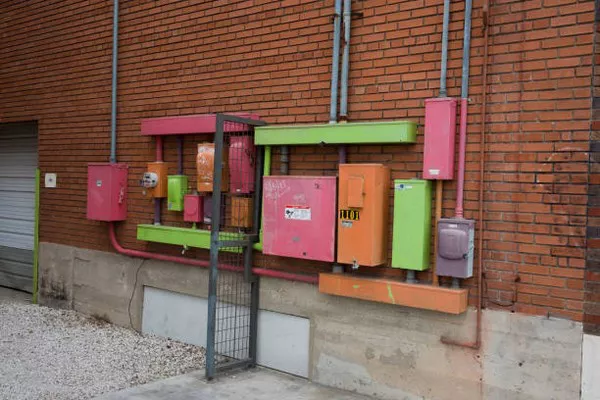Traditionally, generator inspections have required the removal of the rotor, a process that carries inherent risks, including potential generator damage and extended downtime. The time-intensive nature of rotor removal also increases outage duration, further complicating maintenance efforts (Figure 1).
The Challenge of Rotor Removal
Removing a generator’s rotor is not only a meticulous and lengthy task, but it also introduces opportunities for damage during disassembly. However, advancements in robotic inspections are changing this, offering a safer and more efficient alternative.
Robotic Inspections: A Game Changer
By integrating robotic technology with the expertise of field service professionals, plant managers can now significantly reduce both the risks and the duration of outages. One standout example is GE Vernova’s “Robotic Generator Inspection Services,” which offers several key benefits:
- Reduced downtime
- Minimized risk, as rotor removal is no longer necessary
- Lowered workforce requirements for dismantling
Among GE Vernova’s offerings is the air-gap robotic inspection, which allows for a thorough examination of the generator without removing the rotor. This cutting-edge technology enables a full air-gap inspection, visually assessing the rotor and stator surfaces, verifying the tightness of stator wedges, and conducting a stator low-flux magnetic test. The latter is a non-destructive method for checking the condition of the stator core’s insulation, using low levels of excitation to detect faults.
Additionally, GE Vernova provides a generator retaining ring scanner—a robotic tool designed to identify stress corrosion cracks in retaining rings without removing them from the generator. This inspection can also be performed with minimal dismantling and does not require the rotor to be taken out, further reducing outage times.
Comprehensive Testing and Inspection Program
GE Vernova’s robust inspection program is designed to thoroughly evaluate a generator’s condition during an outage. With decades of experience across a vast installed fleet, the company’s diagnostic specialists deliver in-depth analysis and provide actionable recommendations for enhancing generator reliability.
The scope of the inspection is tailored to fit the allotted outage window, while taking into account the specific generator model. Various electrical tests are performed to assess key areas of concern. These include:
Insulation Resistance (IR): Measures the electrical insulation’s resistance between the stator or rotor’s copper conductors and core. High values indicate effective insulation, while low values suggest deterioration.
Polarization Index (PI): A variation of the IR test, PI evaluates the insulation condition by comparing resistance after 10 minutes to the reading after 1 minute. Low values often signal contamination by moisture, dirt, or oil.
High-Potential (Hipot) Testing: Assesses the strength of a stator’s winding insulation. By gradually increasing voltage, this test determines whether the insulation can withstand operational electrical stresses. Failure indicates that rewinding or component replacement is necessary.
Advanced Magnetic and Electromagnetic Testing
Further evaluations are carried out to check the condition of the stator core:
Stator Low Magnetic Test: Performed at low magnetic flux, this test identifies interlaminar insulation faults and short circuits between laminations in the core, as well as potential localized heating issues.
Stator High Magnetic Test: This test subjects the stator core to nearly full magnetic stress, revealing any significant defects that lower flux tests might miss. It verifies the core’s capability to endure full operational conditions without excessive heating.
PULSAR Test: The PULSAR (Pulsed Stepped Auxiliary Winding Ring) test is an advanced method that enhances traditional electromagnetic core tests. By using pulsed excitation, it can detect interlaminar faults and circulating currents with greater sensitivity and precision. Moreover, the PULSAR test is faster and consumes less power than conventional high-flux testing.
Additional Diagnostic Tools
GE Vernova also offers a variety of other tests during maintenance periods to ensure comprehensive generator assessment. These include the stator cooling water flow test, stator end-winding vibration test, rotor field electrical test, rotor hydrogen seal pressure test, stator radial wedging test, and brushless exciter diode test. When used in combination, these tests provide a complete picture of a generator’s health, helping to secure reliable, long-term operation.
Through the integration of robotic inspections and advanced testing, GE Vernova’s approach minimizes downtime and enhances the safety and reliability of generator maintenance, paving the way for more efficient plant operations.
You Might Be Interested In

